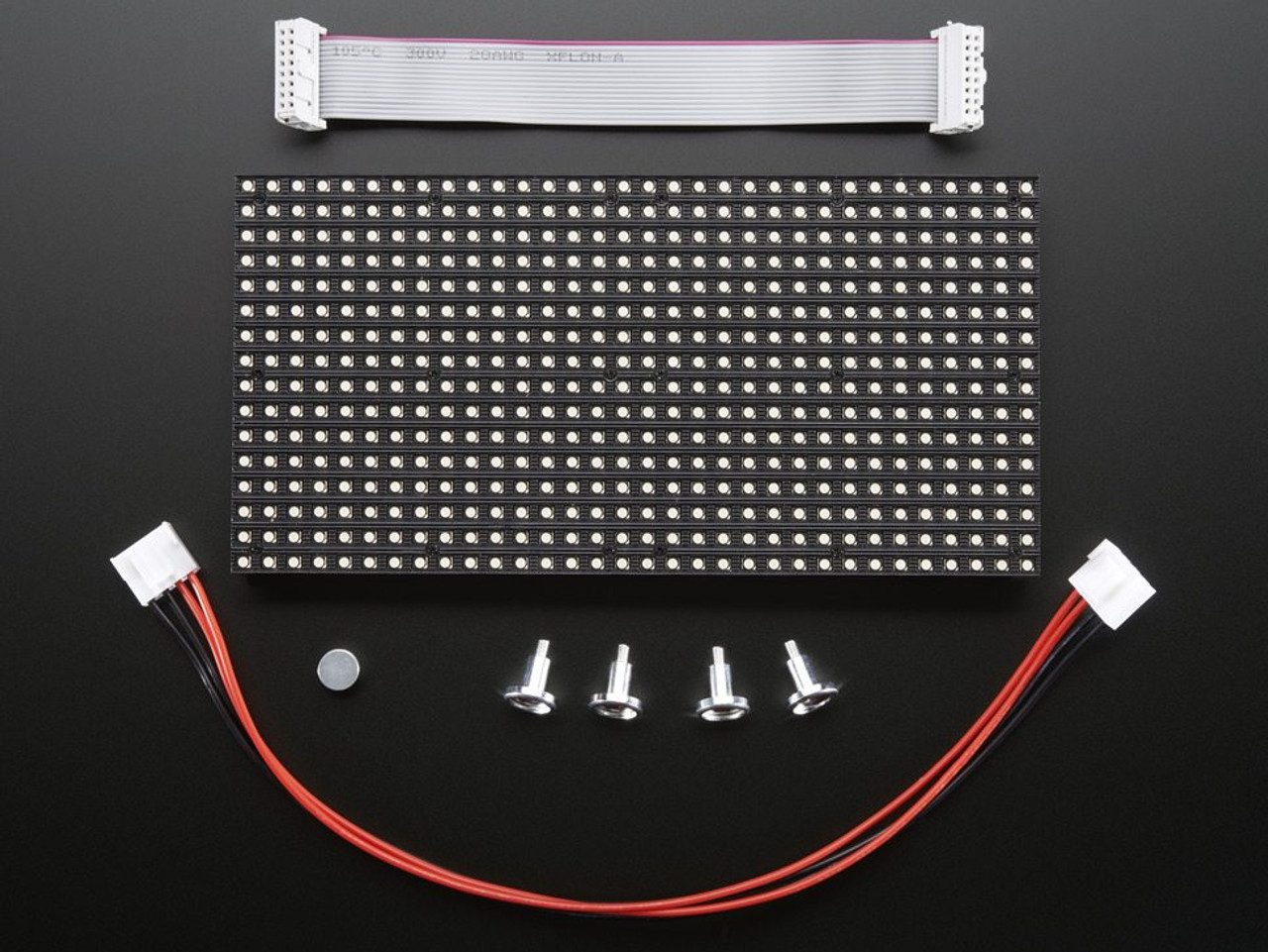

On an Arduino, you'll need 13 digital pins, and about 1600 bytes of RAM to buffer the 12-bit color image. On the back there is a PCB with two sets of dual IDC connectors (two input, two output: in theory you can chain these together) and 12 16-bit latches that allow you to drive the display with a 1:16 scan rate. #include "LedControl.h" #include "binary.32x32 RGB LED Matrix Panel - 4mm Pitch infoģ2x32 RGB LED Matrix Panel has 1024 bright RGB LEDs arranged in a 32x32 grid on the front with 4mm grid spacing.

#Led matrix panel code
SAMPLE CODE FOR ONE 8x8 LED MATRIX //This code below will turn on every dot of the matrix to test that all LEDs work. Place an "X" everywhere you can see the cells and leave the black cells blank (OFF), and there you have it. Use the keyboard to navigate between cells because the mouse will just click the image. Using the Picture tools, you can select the white cells as the "transparent color" that way you can see the grid of cells behind it. (Note: Your Macro security settings in Excel may need to be lowered to allow the button to run its function of creating the code.) The best method I found for the QR codes is to create one on another website, import the image and scale correctly so each dot has its own cell. Just place an "X" or other character in the cell you wish to light up, then click the "Build Code" button and it will create the code for Arduino and copy it to your clipboard. The spreadsheet tool (Excel file near the bottom of the page) assumes there are 16 panels arranged 4x4, and the order as the Arduino sees it is left to right from top to bottom. My spreadsheet tool was designed for 16 LED matrix panels, chained together in two groups of 8. The library can be found here: More information on the LEDcontrol library for Arduino can be found here: When you get into strings of panels to program, it may be easier to write some functions into an Excel spreadsheet to automate some of the programming, since the only thing changing are the panel being addressed and the LEDs that are on or off. You will need the LEDcontrol library installed into your Arduino's library folder. Programming the LED panel can take a lot of time to figure out what LEDs you want on or off.

(Also found at the end of this document.) Connect the jumpers from the control board to the following pins.
#Led matrix panel pdf
Copy the sample code found on the Kit Instructions PDF to test the LEDs. There are pads for DataIn (DIN), Load, Clock (CLK), 5V (V+), and Ground (GND).

Solder jumper wires to the pads on the back of the control board. I hooked up my matrix to an Arduino Uno, so if you have a different model, you may need to change the pins.


 0 kommentar(er)
0 kommentar(er)
